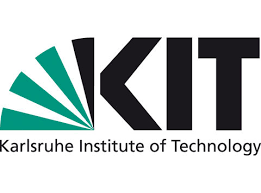Karlsruhe Institute of Technology: Magnetic resonance in desktop format revolutionizes diagnostics and material analysis
In the CRC HyPERion, which is coordinated by the Karlsruhe Institute of Technology (KIT), researchers from the KIT and the Universities of Kaiserslautern, Konstanz and Stuttgart are jointly developing a technology for compact high-performance magnetic resonance. In the future, this could be used in the chemical and pharmaceutical industry, in medical practices or even at border crossings. The German Research Foundation (DFG) will fund the interdisciplinary network from July 1, 2022 over four years with more than 10.6 million euros.
Magnetic resonance is the chemically most specific and at the same time most versatile measuring method for detailed information about the structure and function of molecular matter. It is therefore the basic technique for chemical, biological or material science characterizations. However, the low sensitivity and the relatively high degree of specialization stand in the way of widespread use. The Collaborative Research Center “Compact High Performance Magnetic Resonance Systems – HyPERiON” (High Performance Compact Magnetic Resonance)wants to change this by challenging conventional concepts along the entire signal processing chain. The aim is to improve the sensitivity, resilience and applicability of magnetic resonance in equal measure. The team around SFB spokesman Professor Jan G. Korvink from the Institute for Microstructure Technology (IMT) of the KIT would like to reduce the volume of high-performance magnetic resonance systems from two cubic meters to the size of a 10-liter bucket – i.e. by a factor of more than 200. This would enable its use from the laboratory in chemical and pharmaceutical factories, medical practices or at border crossings and thus make the technology universally usable. “Ultimately, it’s about exploring new and exciting applications in the field of chemistry, from biology to chemical engineering,” says Korvink.
Miniaturization makes magnetic resonance usable even for smaller budgets
In order to achieve its goals, the SFB concentrates on the miniaturization of all components involved in magnetic resonance technology. These are superconducting magnets, cooling systems, high-speed electronics, magnetic resonance sensors, devices for ultra-fast data transmission, as well as devices for hyperpolarizing the nuclear spin of materials and biological samples. “The integration of all these technologies into a modern, wearable platform will mean that we can advance applications of social relevance, for example in the diagnosis of diseases, the use of medical implants or drug discovery,” explains SFB spokesman Korvink . Those involved in the SFB assume that
Quick search for the best materials
In many ways, societal well-being depends critically on access to optimal materials. But the requirements are complex and include not only the function of the material, but also its impact on our biology, on the environment and on how the material can be recovered or degraded. “If material characterization can be performed quickly and with high resolution for a very large number of variants using only tiny samples, and if we can also carry out the tests under operating conditions and study degradation processes, then we have the chance to find the best starting materials that meet our expectations . This is particularly true with regard to a minimal CO2 footprint.” Jan Korvink is convinced:
In addition to HyPERiON, KIT is also involved in another new collaborative research center, which will also start on July 1, 2022: The SFB 1537 “ECOSENSE” under the leadership of the University of Freiburg wants to identify critical changes in the forest ecosystem that occur as a result of climate change more precisely and quickly and predict.
As “The Research University in the Helmholtz Association”, KIT creates and imparts knowledge for society and the environment. The aim is to make significant contributions to global challenges in the fields of energy, mobility and information. To this end, around 9,800 employees work together on a broad disciplinary basis in natural sciences, engineering, economics, humanities and social sciences. KIT prepares its 22,300 students for responsible tasks in society, business, and science through research-oriented university studies. The innovation activity at KIT bridges the gap between knowledge and application for social benefit, economic prosperity and the preservation of our natural foundations of life.

